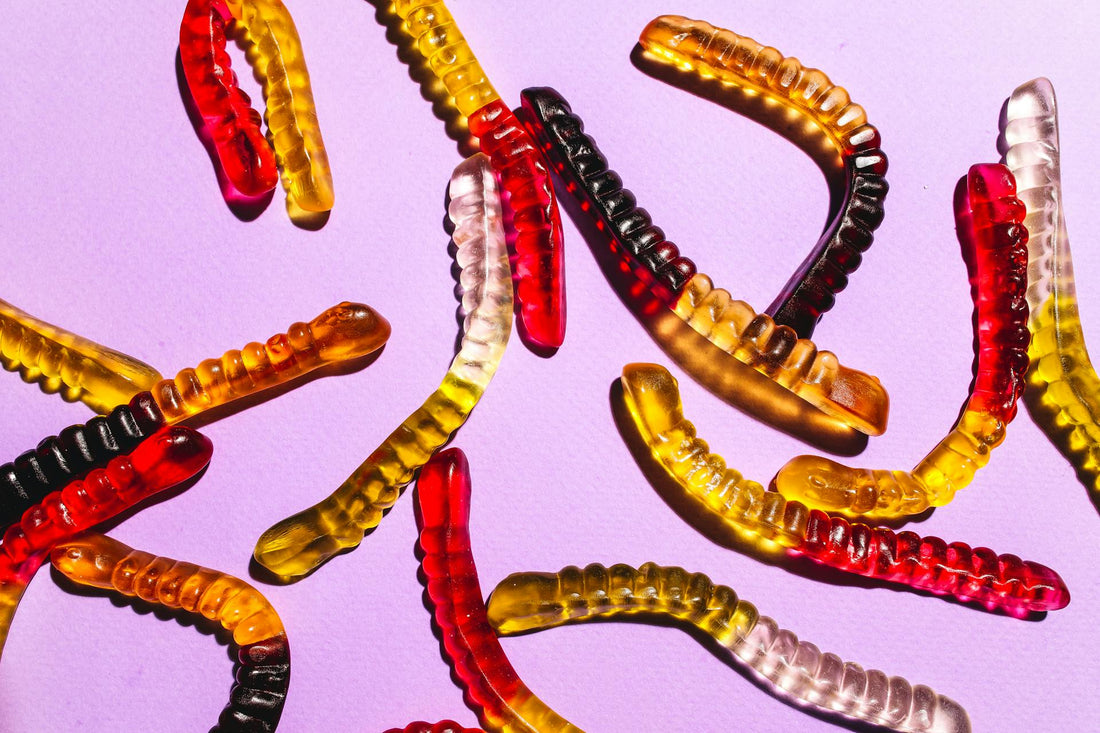
The Swedish Fish That Started a Sour Revolution: How Gummy Worms Changed Everything
The year was 1975, and American candy aisles were dominated by chocolate bars and hard candies. Swedish Fish had introduced Americans to the concept of chewy fruit candy, but they were sweet, simple, and honestly, a little boring. Then someone in a candy lab asked a revolutionary question: "What if we made them sour? And shaped like worms?" That question would launch a sour candy revolution that continues today.
The Swedish Foundation
To understand the sour gummy revolution, we need to start with Swedish Fish. Created in Sweden in the 1950s and imported to America in the 1960s, these red, fish-shaped gummies were a revelation. They proved that American consumers were ready for chewy, fruit-flavored candy that wasn't chocolate.
But Swedish Fish had limitations:
- Only one flavor (that mysterious "fish" taste)
- Only one texture (sweet and simple)
- Only one experience (eat and enjoy)
They were good, but they weren't exciting.
The American Innovation
In the early 1970s, Ferrara Candy Company (then known as Ferrara Pan) was looking at the success of Swedish Fish and thinking bigger. They had mastered gummy candy production, but they wanted to create something uniquely American – something with more attitude.
The breakthrough came when someone suggested combining two concepts:
- The successful gummy format of Swedish Fish
- The sour coating technology used on hard candies
The result? Sour gummy worms – candy that didn't just taste good, it created an experience.
The Shape Revolution
Why worms? The choice was brilliant for several reasons:
Maximum Surface Area: The long, thin shape provided maximum surface area for sour coating adhesion. More surface meant more sour punch.
Playability Factor: Unlike fish or bears, worms were inherently fun to play with. You could dangle them, bite them in half, share them with friends, or gross out your siblings.
Visual Impact: Colorful gummy worms looked exciting in the candy aisle – more dynamic than static fish shapes.
Portion Psychology: The worm shape felt more substantial than smaller gummy shapes, creating better perceived value.
The Sour Science
Creating the perfect sour gummy worm required solving several technical challenges:
The Coating: Early attempts used citric acid (from citrus fruits), but it didn't stick well to gummy surfaces and would fall off in the bag. Candy engineers developed a two-step process: first, a light sugar coating to create texture, then the sour acid layer.
The Flavor Release: The genius was in the timing. The sour coating hits your taste buds immediately, creating that mouth-puckering sensation, followed by the sweet gummy interior as you chew. This created a "flavor journey" that kept people coming back.
The Acid Balance: Too much citric acid and the candy became inedible. Too little and there was no sour impact. The sweet spot was around 2-3% coating by weight.
The Dual-Texture Breakthrough
What made sour gummy worms revolutionary wasn't just the sour coating – it was the creation of dual-texture candy. For the first time, one piece of candy delivered two completely different experiences:
- The Initial Hit: Sharp, puckering sourness
- The Sweet Relief: Chewy, fruity sweetness
This created what food scientists now call "sensory contrast" – the interplay between different taste and texture experiences that makes food more interesting and addictive.
The Cultural Explosion
Sour gummy worms launched in 1976 and immediately changed candy culture:
The Dare Culture: Sour gummy worms became the center of playground dares. "I bet you can't eat five at once" became a common challenge.
The Sour Face Phenomenon: That involuntary pucker face became a shared cultural experience. Everyone made the same face, and everyone laughed about it.
The Sharing Ritual: Unlike chocolate bars, gummy worms were communal. Their shape made them perfect for sharing, breaking apart, or trading colors.
The Flavor Evolution
The original sour gummy worms came in basic fruit flavors, but success bred innovation:
- Cherry (the classic red)
- Orange (bright and citrusy)
- Lemon (double sour impact)
- Lime (the rebellious green)
- Grape (the sophisticated purple)
Each flavor required different acid blends and color combinations. The candy labs became flavor chemistry workshops.
The Copycat Wars
Success breeds imitation, and by 1980, every major candy company had their own sour gummy line:
- Sour Patch Kids (human-shaped sourness)
- Warheads (extreme sour hard candy)
- Sour Belts (sour in strip form)
- Sour Bears (the gummy bear gets an attitude)
But gummy worms remained the king of sour – the original that started it all.
The Science of Addiction
Modern food science has explained why sour gummy worms are so addictive:
Endorphin Release: The initial sour shock triggers endorphin release – your brain's natural "feel good" chemicals.
Sweet Relief: The following sweetness creates a reward sensation, reinforcing the desire to repeat the experience.
Sensory Memory: The dramatic flavor contrast creates strong taste memories, making you crave that specific experience.
The Modern Legacy
Today's sour candy market – worth over $2 billion annually – all traces back to those first sour gummy worms in 1976. They proved that Americans didn't just want sweet candy; they wanted candy that challenged them, surprised them, and gave them an experience worth sharing.
At Candy Lips, our Sour Gummy Worm Soda captures that revolutionary spirit. Every sip delivers the perfect balance of sour shock and sweet satisfaction that made gummy worms a cultural phenomenon.
Taste the revolution in liquid form. Try Candy Lips Sour Gummy Worm Soda today.
